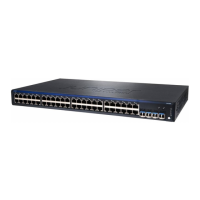enhanced-hash-key
Syntax enhanced-hash-key {
hash-mode {
layer2-header;
layer2-payload;
}
inet {
no-ipv4-destination-address;
no-ipv4-source-address;
no-l4-destination-port;
no-l4-source-port;
no-protocol;
vlan-id;
}
inet6 {
no-ipv6-destination-address;
no-ipv6-source-address;
no-l4-destination-port;
no-l4-source-port;
no-next-header;
vlan-id;
}
layer2 {
no-destination-mac-address;
no-ether-type;
no-source-mac-address;
vlan-id;
}
}
Hierarchy Level [edit forwarding-options]
Release Information Statement introduced in Junos OS Release 13.2X51-D15 for EX Series switches.
Statement introduced in Junos OS Release 13.2X51-D20 for QFX Series devices.
Description Configure the hashing key used to hash link aggregation group (LAG) and equal-cost
multipath (ECMP) traffic.
The hashing algorithm is used to make traffic-forwarding decisions for traffic entering a
LAG bundle or for traffic exiting a switch when ECMP is enabled.
For LAG bundles, the hashing algorithm determines how traffic entering a LAG bundle is
placed onto the bundle’s member links. The hashing algorithm tries to manage bandwidth
by evenly load-balancing all incoming traffic across the member links in the bundle.
When ECMP is enabled, the hashing algorithm determines how incoming traffic is
forwarded to the next-hop device.
The remaining statements are explained separately.
Required Privilege
Level
interface—To view this statement in the configuration.
interface-control—To add this statement to the configuration.
Copyright © 2015, Juniper Networks, Inc.170
Network Interfaces for EX4300 Switches

